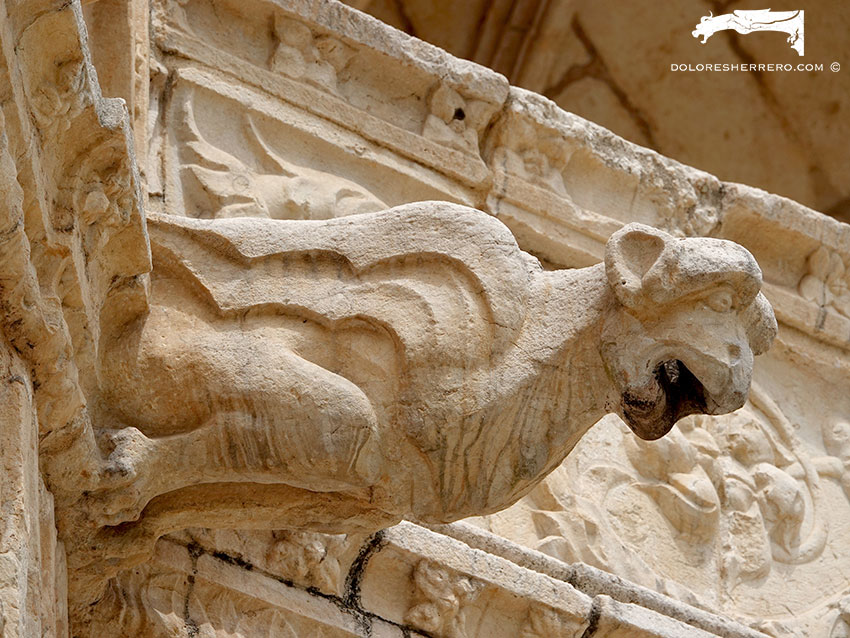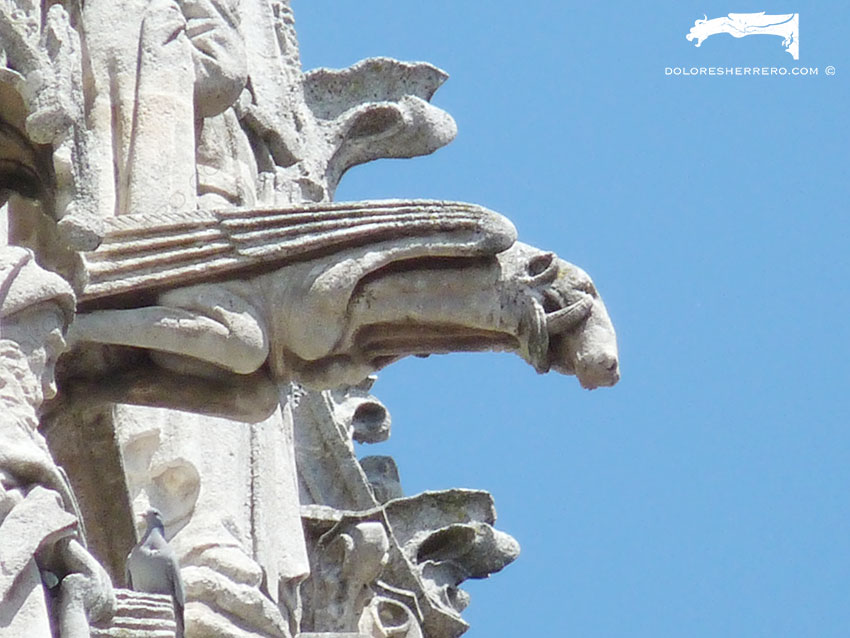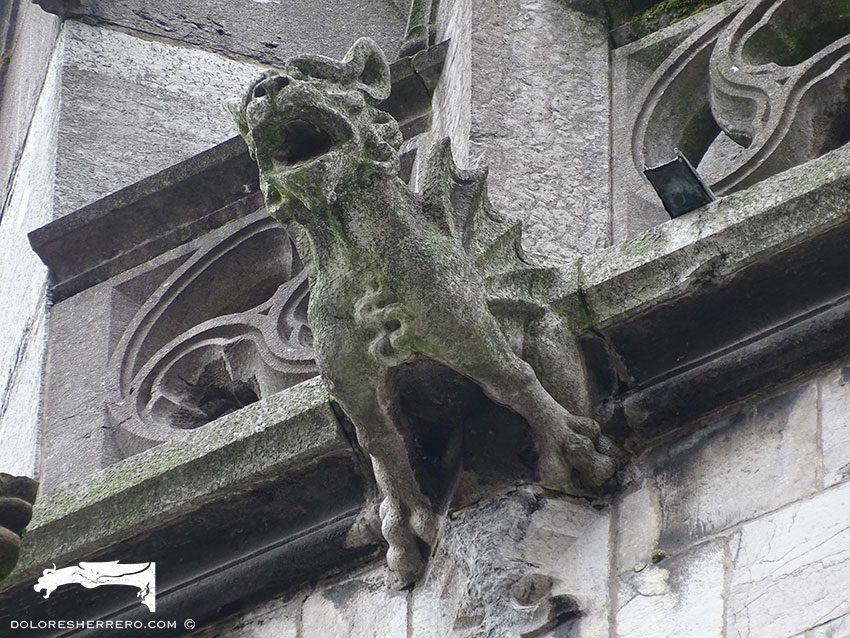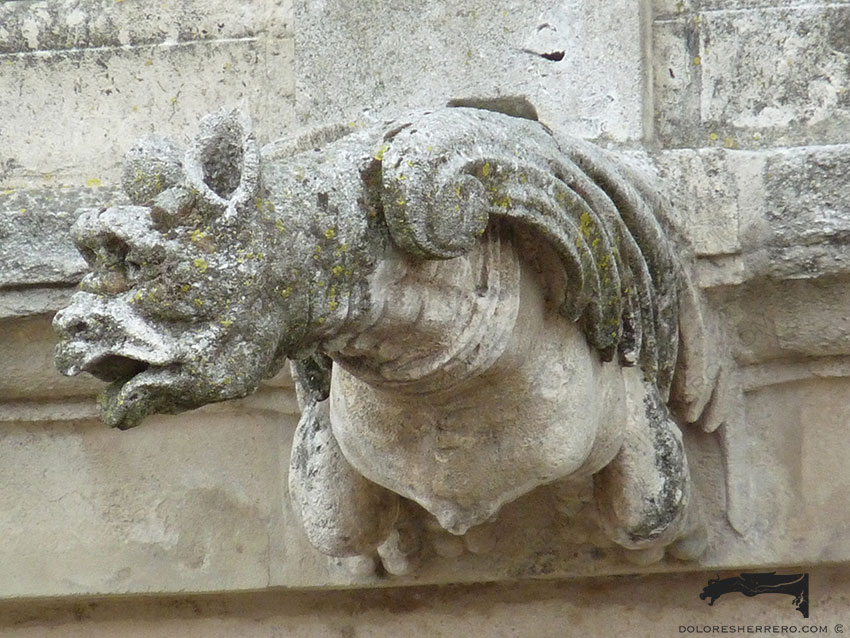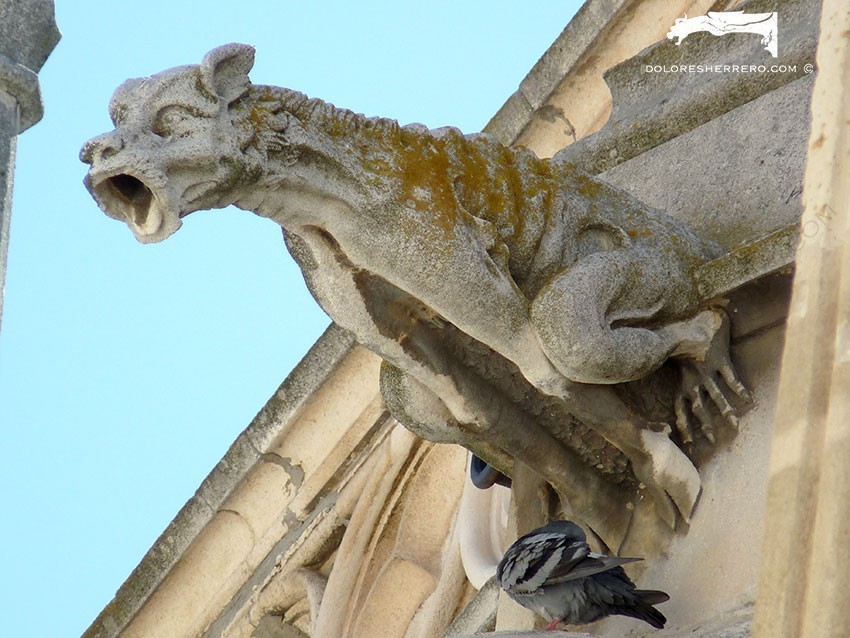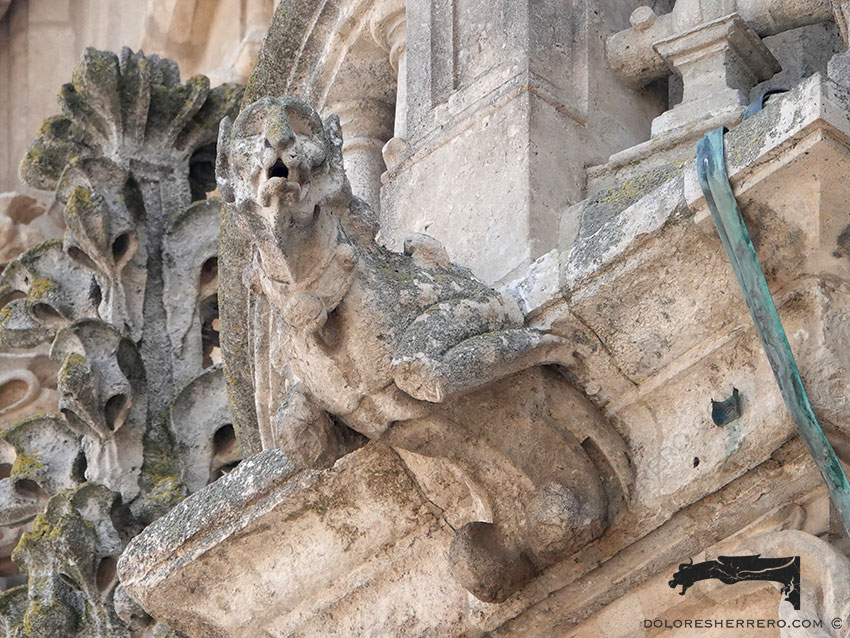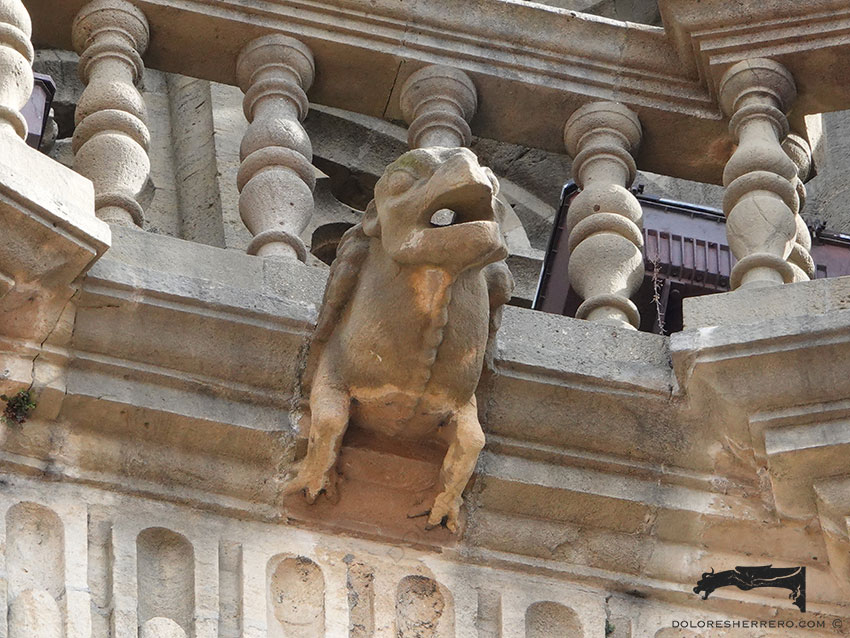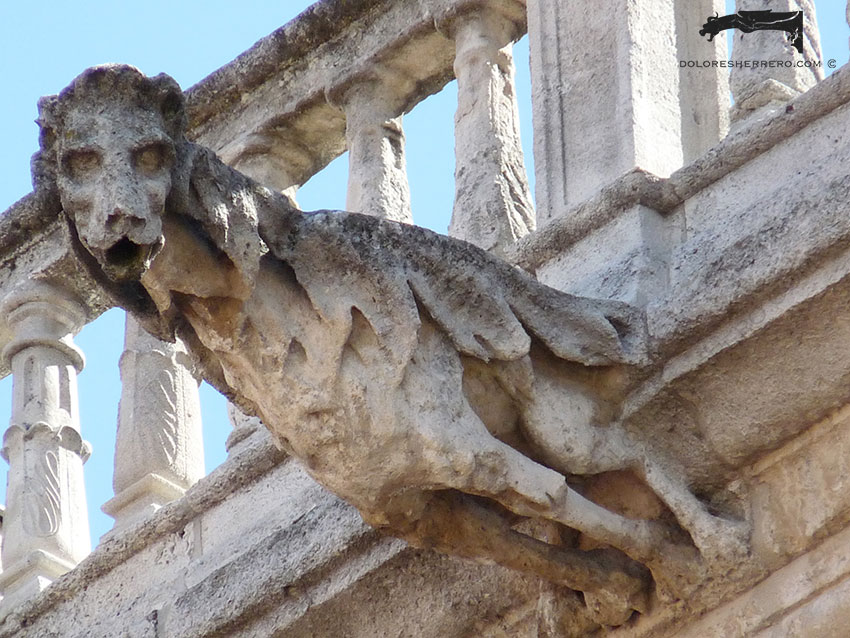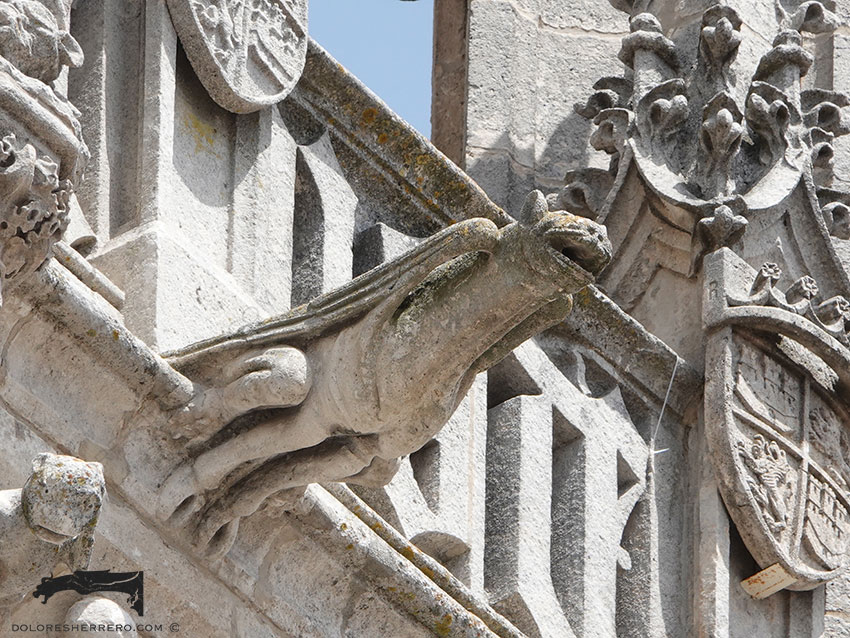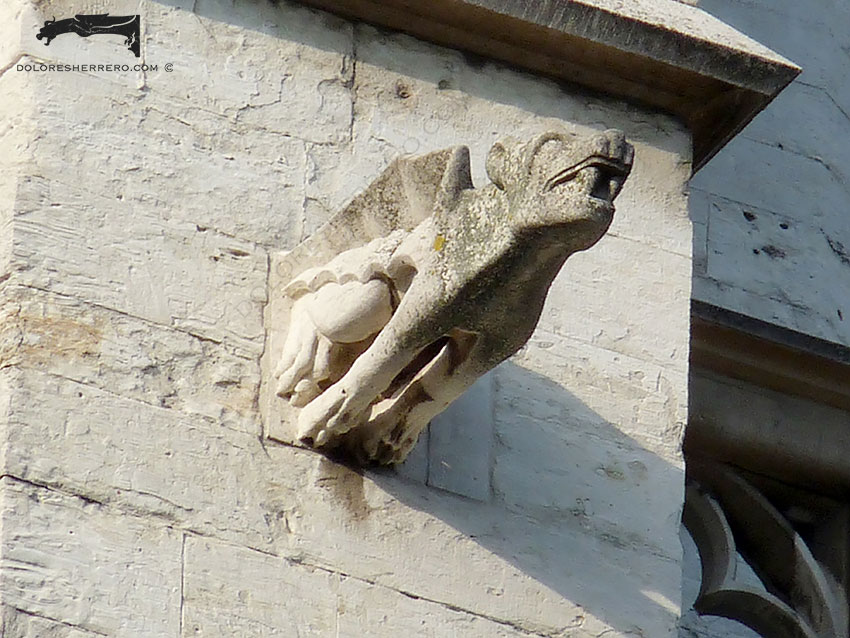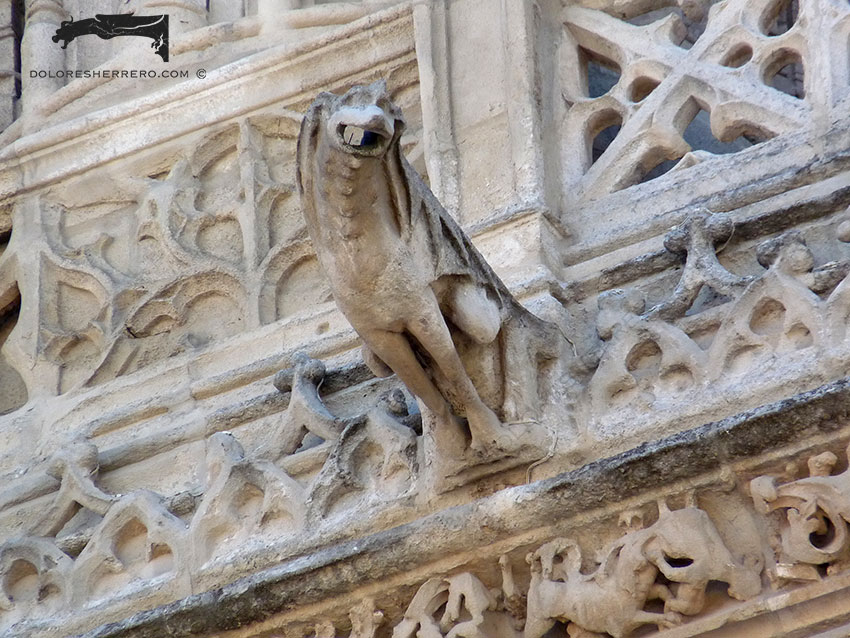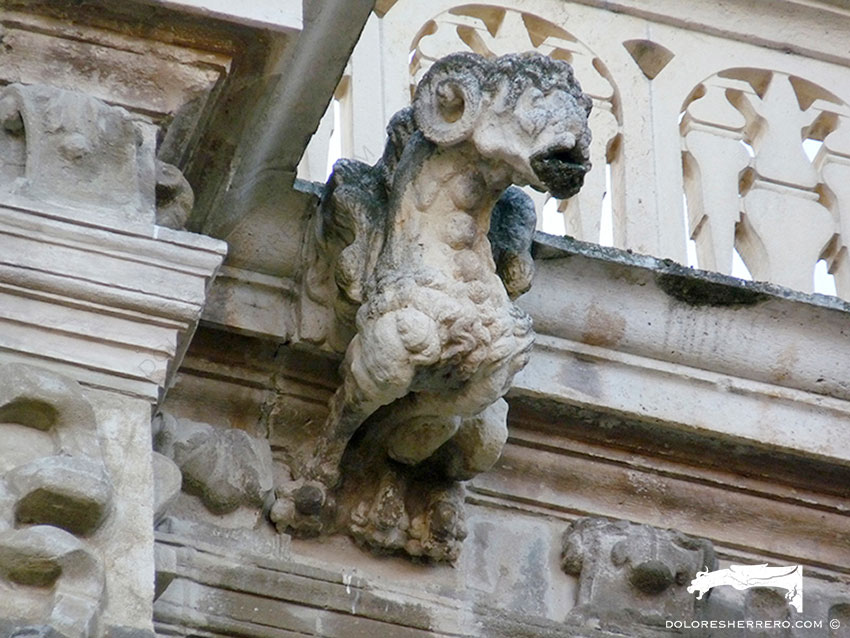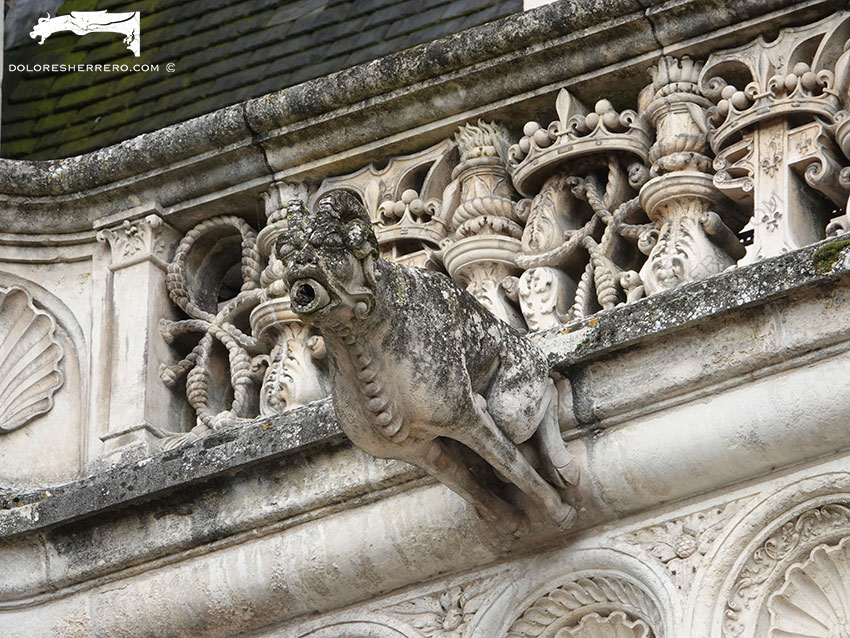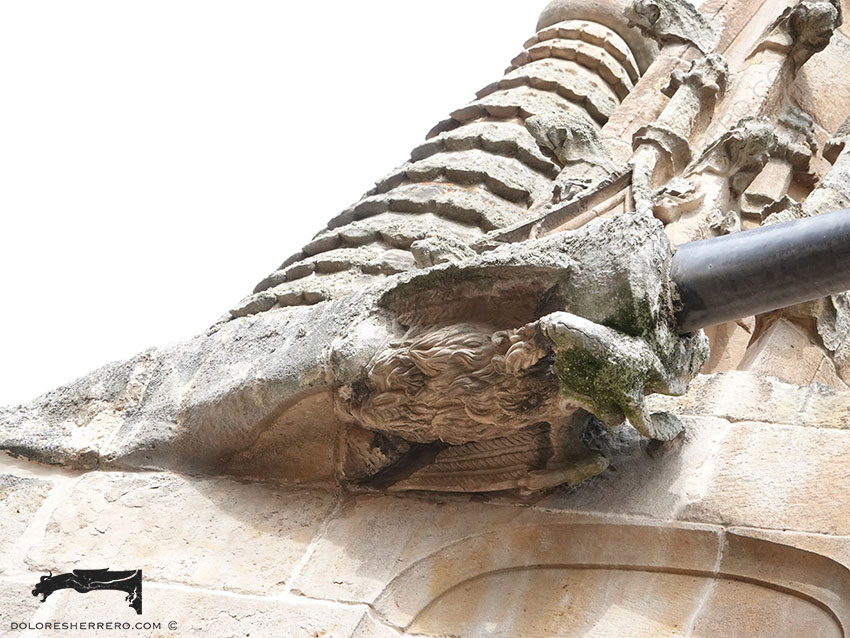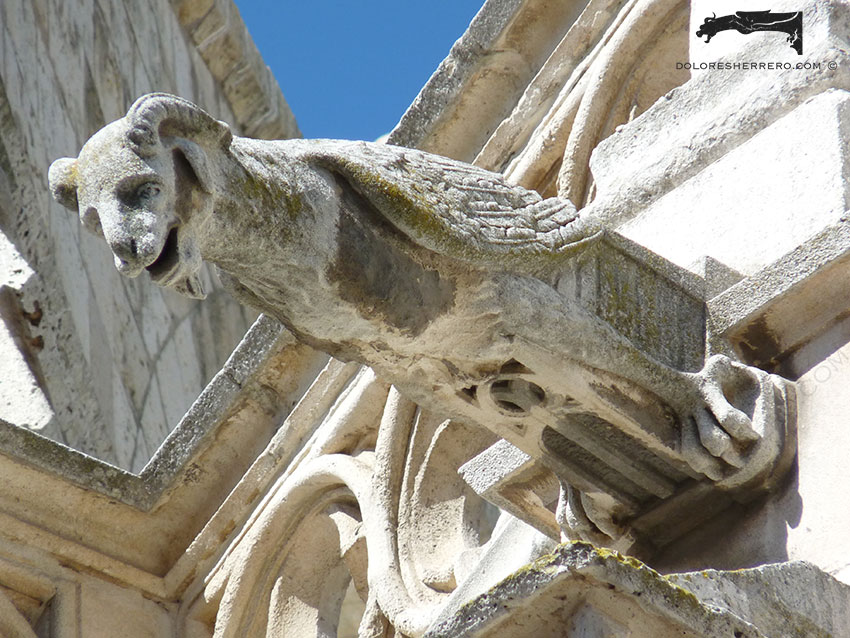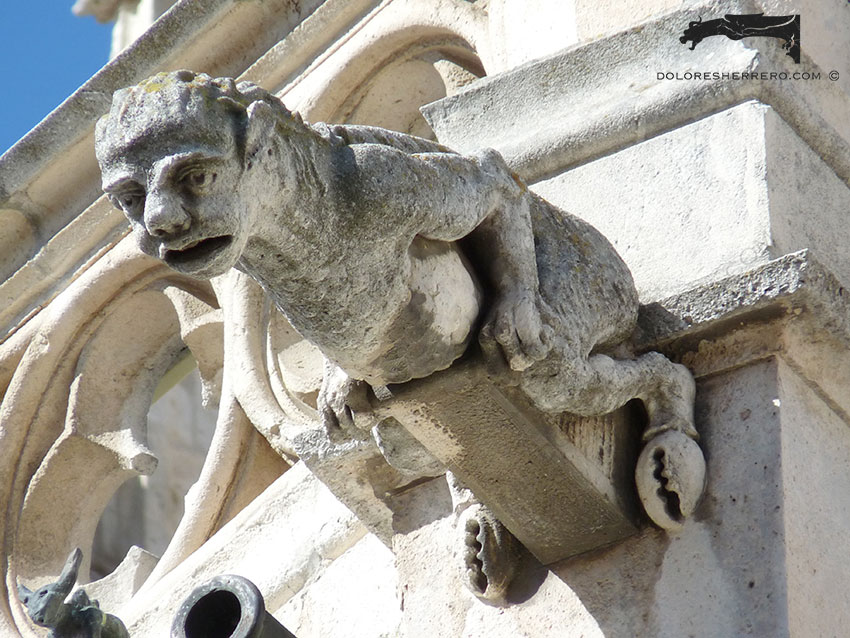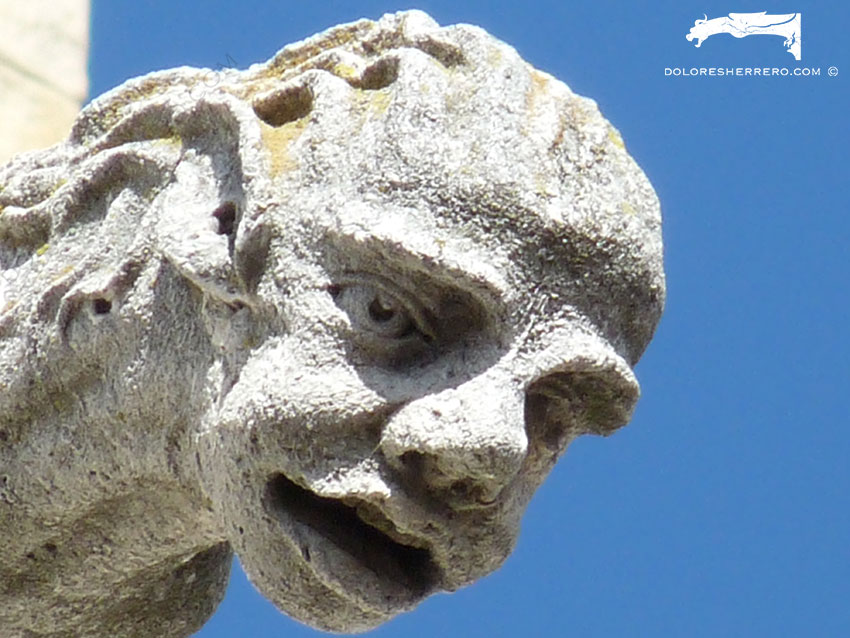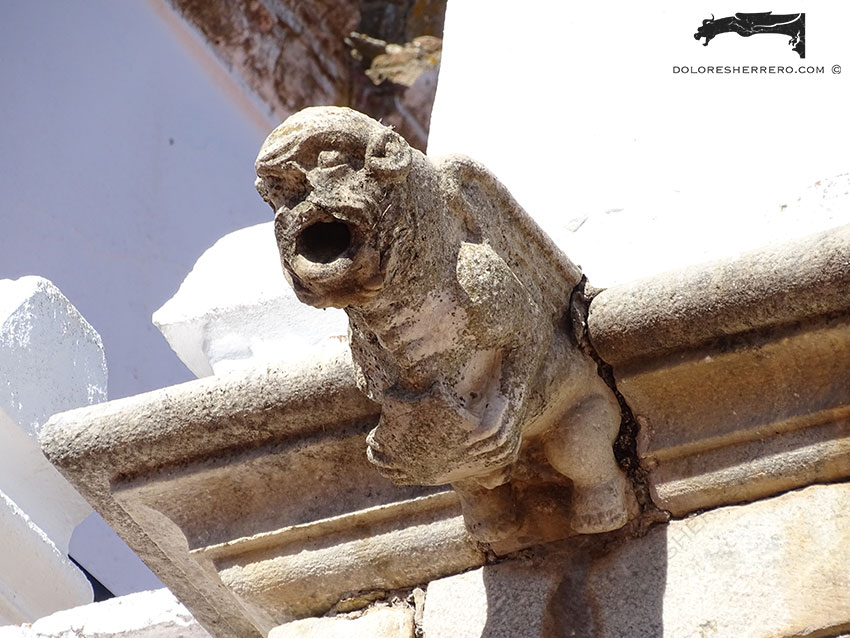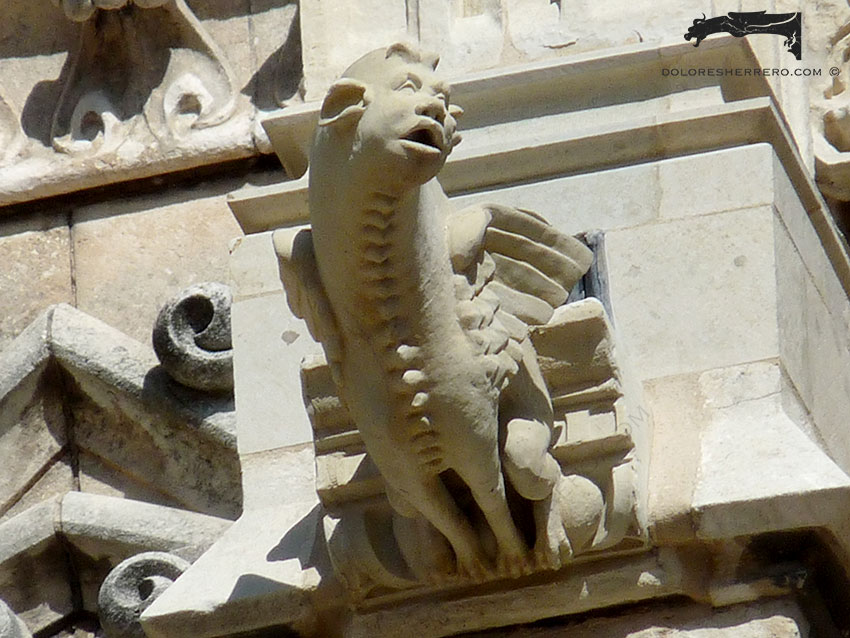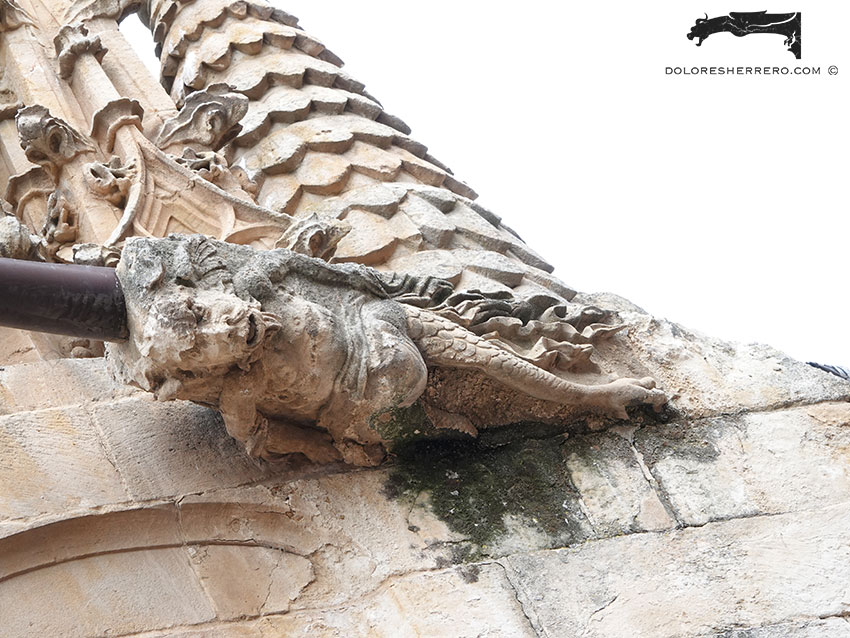Gargoyles
We continue with devilish symbolism and its portrayal in gargoyles and, after having seen the most common features of iconography of the devil in my first post, we’re now going to look at some other interesting aspects.
Apart from the images of the devil himself, gargoyles also show figures from other typologies that either depict the devil or have some sort of demonic connotation.
Some fantastical creatures, not only from mythological works but also from folk tradition and superstition, are sometimes associated with evil and symbolise the devil, such as the dragon, gryphon, basilisk, etc.
This kind of connection can also be seen with real animals, a link that relates to animal symbolism and especially to their negative powers, which we discussed in my posts about images of unusual animals in gargoyles.
Apart from the bat, an animal linked to devilish symbolism, there are animals and figures of hybrids with devil-style features (bat’s wings, horns, protuberance, ferocious expressions, crests, goatee beards, etc.). Some sources identify the devil with certain animals. Grivot talks about the devil in the life of some saints, revealing a very interesting source on the metamorphosis of the devil when he manifests himself and pointing to accounts that help us to understand some of the artistic portrayals of this character. For example, he tells that in 988, Saint Dunstan, Abbot of Gladstone Monastery, says that the devil manifests himself in the form of a bear, dog or fox. In 1035, Saint Simeon of Trier heard demons howling like wolves, grunting like pigs, roaring like lions, cawing like crows and imitating eagles, kites and vultures. In the 13th century, Saint Domingo saw Satan in the form of a crocodile. In 1237, the Blessed Jutte, a hermit in Huy (Belgium), saw the devil in the form of monkeys, lions, bears, forest creatures and snakes. In 1292, Father Victor de Buch, from the Company of Jesus, tells how the Blessed Benvenuta Bojani, from Friuli, a sister in the Third Order of Saint Dominic, was pursued by the devil in the form of a cat, snake, monster and dog.
Gargoyles of demons with animal parts
- Jerónimos Monastery in Lisbon (Portugal)
- Burgos Cathedral (Spain)
- Church of St. Foillan in Aachen (Germany)
- Burgos Cathedral (Spain)
- Mirepoix Cathedral (France)
- Burgos Cathedral (Spain)
- Oviedo Cathedral (Spain)
- Burgos Cathedral (Spain)
- Burgos Cathedral (Spain)
- Brussels Cathedral (Belgium)
- Burgos Cathedral (Spain)
One of the most well-known portrayals of the devil is as a billy goat. The symbolic meaning of this dates back to classic Antiquity, with the figures of Pan and Silenus. These characters were lewd satyrs, half man and half goat, with pointed ears, a huge phallus, goatee beard, a goat’s tail, hooves, horns and hair on the lower half of their bodies, features that have passed down into the iconography of the devil. Saint Jerome said that fauns and satyrs were lascivious demons and symbols of the devil.
Billy goats gargoyles
- Astorga Cathedral (Spain)
- Château Royal in Blois (France)
- Catedral de Salamanca
- Palencia Cathedral (Spain)
Lastly, there are also gargoyles with anthropomorphic devils, in many cases impressive, terrifying images, showing an extraordinary creativity that makes them amazing, fascinating figures.
Gargoyles with anthropomorphic devils
- Palencia Cathedral (Spain)
- Church of Santa María Magdalena in Olivenza (Badajoz, Spain)
- León Cathedral (Spain)
- Bordeaux Cathedral (France)
- Salamanca Cathedral (Spain)
Bibliography consulted
GRIVOT, D., Le diable dans la cathedrale, Paris, Editions Morel, 1960.
LINK, L., El Diablo. Una máscara sin rostro, Madrid, Editorial Síntesis, S. A., 2002.
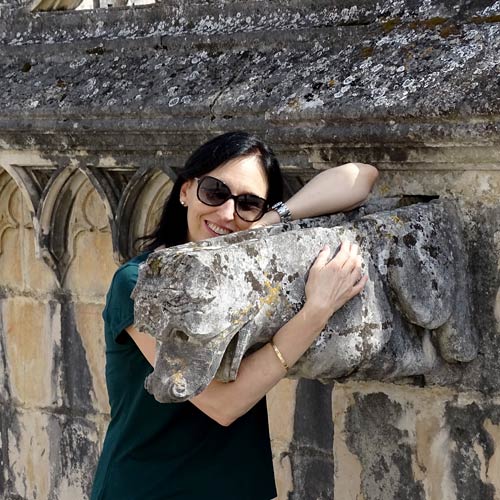
Doctor of Art History and researcher specializing in the study of gargoyles.
I am Dolores Herrero Ferrio, and my thesis, “An Approach to the Study of Gargoyles of Gothic Cathedrals in Castilla and León”, is dedicated to the study of these fascinating figures.
If you like gargoyles and art history, you will also enjoy my book, “The Gargoyle and Its Iconography,” a book I have written with great care for those interested in the world of gargoyles.
I have created my own Encyclopedia of Gargoyles, a Gargopedia to share with you, where you will discover all the secrets and wonders of these enigmatic sculptures.
I hope you enjoy this Gargopedia as much as I have enjoyed creating it, and remember that each gargoyle has a story to tell, and here you will discover them all.
